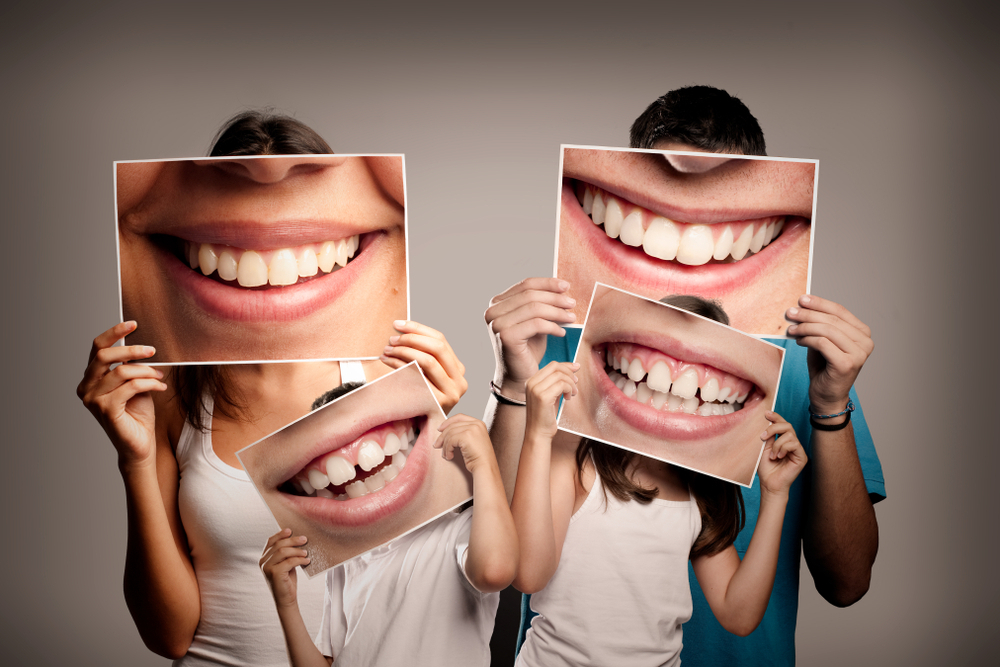What Does Legacy Orthodontics Mean?
What Does Legacy Orthodontics Mean?
Blog Article
Fascination About Legacy Orthodontics
Table of ContentsLegacy Orthodontics Things To Know Before You BuyAll about Legacy OrthodonticsThe Of Legacy Orthodontics7 Easy Facts About Legacy Orthodontics ExplainedLegacy Orthodontics - The Facts
In enhancement, we supply flexible therapy timetables, adaptable repayment choices and an enjoyable, enjoyable experience.An orthodontist is a dental expert educated to diagnose, protect against, and treat teeth and jaw irregularities. Orthodontists function with people of all ages, from youngsters to adults.
Malocclusion, or misaligned teeth, can lead to dental concerns, including dental cavity, periodontal condition, and challenging or agonizing chewing. However not every person is born with straight teeth. If you have a bad bite or big spaces between your teeth, you might desire to seek advice from a dental expert specializing in orthodontic care.
The Basic Principles Of Legacy Orthodontics
( Photo Credit Report: DigitalVision/Getty Images) Orthodontists make use of fixed and removable dental devices, like braces, retainers, and bands, to change the position of teeth in your mouth. Orthodontic treatment is for dental abnormalities, including: Crooked teethBite problems, like an overbite or an underbiteCrowded teeth or teeth that are too far apartJaw misalignmentThe goal of orthodontic therapy is to improve your bite.
A healthy bite ensures you can eat, eat, and speak appropriately. While you may believe of orthodontists as mostly for kids or young adults that need dental braces, they can correct oral issues at any type of age. Orthodontists go to university, oral school, and orthodontic school. After graduation, they spend 2 or 3 years in an orthodontic residency program.
, however not all dental professionals are orthodontists. They concentrate on 2 areas: Exactly how to correctly and safely relocate teeth Just how to properly lead growth in the teeth, jaw, and faceOnce an orthodontist has completed training, they have the option to become board accredited.
How Legacy Orthodontics can Save You Time, Stress, and Money.
Misalignment, or malocclusion, is the most common reason people see an orthodontist. It is hereditary and is the result of dimension distinctions in between the upper and reduced jaw or in between the jaw and teeth. Malocclusion brings about tooth overcrowding, an irregular jaw, or irregular bite patterns. Malocclusion is generally treated with: Your orthodontist connects metal, ceramic, or plastic square bonds to your teeth.
If you have just minor malocclusion, you may be able to utilize clear dental braces, called aligners, as opposed to traditional braces (https://anotepad.com/note/read/j8pq9h7j). Some people need a headwear to aid move teeth into line with stress from outside the mouth. After dental braces or aligners, you'll need to put on a retainer. A retainer is a custom device that keeps your teeth in position.
They're most usually used on children. They can produce added area in the mouth without having to pull teeth. If you have a severe underbite or overbite, you could require orthognathic surgery (likewise called orthodontic surgical treatment) to extend or reduce your jaw. Orthodontists make use of cords, medical screws, or plates to sustain your jaw bone.
You may need to see an orthodontist if you have: Crowding or not enough room for all of your teethOverbite, when your upper teeth come your bottom teethUnderbite, when your bottom teeth are as well much forwardSpacing or problems with gapsCrossbite, which is when your upper teeth fit behind your bottom teeth when your mouth is closedOpen bite or a vertical gap between your front bottom and upper teethMisplaced midline, when the facility of your bottom and upper teeth don't line up Fixing an oral malocclusion can: Make biting, chewing, and speaking easierImprove the symmetry of our face and your overall appearanceEase pain from temporomandibular joint conditionsSeparate your teeth and make them simpler to clean up, helping prevent dental cavity or cavities It's frequently a dentist that initially notifications misaligned teeth during a regular examination.
The 5-Minute Rule for Legacy Orthodontics

During your initial orthodontic consultation, you'll likely have: A dental examPhotos taken of your face and smileDental X-raysPanoramic (360 level) X-rays of your face and headImpressions to produce mold and mildews of your teethThese examinations will aid your orthodontist recognize just how to wage your treatment. invisalign. An orthodontist is a dental expert who's had Source training to treat your teeth and jaw
An orthodontist is focused on your bite, so something like a broken tooth would be taken care of by a dental expert. Orthodontists are focused on your bite, or the means your teeth fit with each other, and the straightness of your teeth.
Ever asked yourself exactly how celebrities always appear to have perfectly lined up teeth? The response frequently depends on the proficient hands of an orthodontist. But exactly what does an orthodontist do? Orthodontists are dental specialists that focus on correcting irregularities in the teeth and jaws. Their experience goes past just producing a lovely smile; it expands to improving your overall dental wellness and function.
Some Known Factual Statements About Legacy Orthodontics

, orthodontists have a varied toolkit at their disposal. These tried-and-true dental braces use a system of braces bound to the teeth and linked by cables.
Clear aligners, like Invisalign, are a preferred option for people looking for a more discreet treatment option. These removable trays are custom-made to gradually change the teeth's position. Headgear may be made use of together with braces or aligners to apply additional targeted pressures, particularly for remedying jaw inconsistencies. In cases of slim jaws, palatal expanders can be made use of to produce area for proper tooth alignment.
Report this page